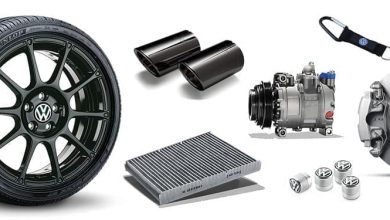The Ultimate Mattress Buying Guide: Finding the Perfect Bed for a Good Night's Sleep

Are you tired of tossing and turning all night on an uncomfortable mattress? Look no further! In this ultimate mattress-buying guide, we will help you navigate the overwhelming world of mattresses to find the perfect bed for a good night’s sleep. Express farewell to anxious evenings and hi to pleasant dreams with our master tips and counsel. Prepare to redesign your resting experience and wake up feeling revived and restored each day. We should make a plunge!
Introduction: Explaining the Importance of a Good Mattress for Sleep and Overall Health
Getting a good night’s sleep is crucial for our overall health and well-being. It not only allows us to feel rested and energized, but it also plays a significant role in maintaining our physical and mental health. And one of the essential factors that contribute to getting quality sleep is having a good mattress.
A decent sleeping pad offers fundamental help, solace, and arrangement for our bodies while we rest. It can have a significant effect between awakening feeling revived or encountering back torment, firmness, and distress over the day.
Understanding Your Sleep Needs: Factors to consider such as sleeping position, body type, and any specific health concerns
When it comes to getting a good night’s sleep, choosing the right mattress is crucial. However, what many people fail to realize is that their sleeping needs are unique and may differ from others. To find the ideal bed for your singular rest needs, there are sure factors that you ought to consider. These incorporate your dozing position, body type, and particular well-being concerns.
Sleeping Position: This is perhaps one of the most important factors to consider when choosing a mattress. Your favoured dozing position can significantly influence the kind of help and solace level you expect from your bed. For example, people who rest on their stomachs may require a firmer sleeping pad to forestall soaking in something over the top and causing a burden on their spine. Then again, side sleepers might profit from gentler bedding that takes into consideration better shaping and tension help on their hips and shoulders.
Body Type: Another crucial aspect to consider is your body type. Individuals with various body types have fluctuating help needs with sleeping pads. For instance, heavier people might require thicker and more steady bedding to try not to droop or soak in that frame of mind while they rest. Then again, lighter people might be inclined toward a gentler sleeping cushion for better solace.
Specific Health Concerns: If you have any specific health concerns such as back pain or allergies, these should also be taken into consideration when looking for a new mattress. For those with back torment issues, finding a bed that offers sufficient help and tension help can have a significant effect on getting a decent night’s rest. Essentially, assuming that you experience the ill effects of sensitivities or respiratory issues, selecting hypoallergenic materials in your bedding can assist with lessening possible triggers while you rest.
Types of Mattresses:
When it comes to buying a new mattress, the options can seem overwhelming. With such countless sorts and brands to look over, it very well may be hard to tell which one is ideal for you. In this segment, we will examine the five most normal kinds of bedding: innerspring, adaptable padding, plastic, crossover, and pneumatic beds. We will make sense of the distinctions between each sort and their separate advantages, assisting you with settling on an educated choice while buying your next sleeping pad.
- Innerspring Mattresses
Innerspring mattresses are the most traditional type of mattress and have been around for decades. They are comprised of steel loops that offer help and bob to the sleeper. The number of loops in innerspring bedding can differ, with additional curls, for the most part, likening to more readily support and strength.
Benefits:
– Affordable price point compared to other types of mattresses.
– Good airflow through the coils helps regulate body temperature while sleeping.
– Bouncy surface makes it easier to get in and out of bed.
– Wide variety available with different firmness levels.
- Memory Foam Mattresses
Memory foam mattresses have gained popularity over recent years due to their ability to conform and contour to a sleeper’s body shape. These beddings use layers of thick froth that answer body intensity and strain focuses, offering customized help for an agreeable night’s rest.
Benefits:
– Pressure relief for those with joint pain or back problems.
– Motion isolation – great for couples who don’t want movement on one side of the bed affecting the other.
– Hypoallergenic properties as they are resistant against dust mites and allergens.
- Latex Mattresses
Latex mattresses are similar to memory foam but use natural or synthetic latex instead of foam as their main material. They offer comparable comfort levels but have a slightly firmer feel than memory foam.
Benefits:
– Natural latex is eco-friendly as it is derived from rubber trees.
– Durable and long-lasting – can last up to 15 years.
– Excellent support for the spine and joints.
- Hybrid Mattresses
As the name suggests, hybrid mattresses combine the best features of both innerspring and memory foam/latex mattresses. They usually have a layer of coils for support and comfort layers made of foam or latex on top.
Benefits:
– Combines the durability of an innerspring mattress with the pressure relief of foam/latex.
– Good motion isolation.
– Suitable for all types of sleepers.
- Air Mattresses
Air mattresses use air chambers as their main support system, which can be adjusted to achieve different levels of firmness. These are quite versatile and are often used as temporary beds for guests or camping trips.
Benefits:
– Adjustable firmness levels to cater to individual preferences.
– Lightweight and portable – easy to store away when not in use.
Firmness Level: Determining the right level of firmness for your body and sleep needs
When it comes to finding the perfect mattress for a good night’s sleep, one of the most crucial factors to consider is the firmness level. The firmness of a mattress refers to how hard or soft it feels when you lie on it. This can greatly impact your overall comfort and support while sleeping, and in turn, affect your quality of sleep.
Nonetheless, deciding the right degree of solidness for your body and rest needs can be precarious. With such countless choices accessible on the lookout, it very well may be overpowering to conclude which one is best for you. In this part, we will talk about what immovability levels are accessible and how to figure out which one is reasonable for you.
Firstly, let’s understand the different levels of firmness commonly used by manufacturers: soft, medium-soft, medium-firm, and firm. Delicate beddings have more give or sink-in when you lie on them and are great for side sleepers as they give help to pressure focuses like shoulders and hips. Medium-delicate beddings offer slight shaping with more help than delicate sleeping pads; they are appropriate for mixed sleepers who switch between various situations throughout the evening.
Now that we know about different levels of firmness let’s look at some key factors that can help determine which one will be best suited for your body and sleep needs:
1) Sleeping Position: As mentioned earlier, each level of firmness is more suitable for different sleeping positions. If you primarily sleep on your side, a softer mattress may be more comfortable, while stomach sleepers may prefer a firmer one.
2) Body Weight: A person’s weight can also play a role in determining the right level of firmness. Heavier individuals generally tend to sink into mattresses more, so they need a firmer surface to maintain proper alignment and support.
3) Personal Preference: Ultimately, everyone has their preferences when it comes to the feel of their mattress. Some may find medium-soft to be the perfect balance between comfort and support, while others may prefer a firmer or softer option.
Finding the right level of firmness for your body and sleep needs requires considering various factors like sleeping position, body weight, and personal preference. It is essential to do your research and try out different options before making a decision. Remember that having the correct firmness level can greatly impact your overall comfort and contribute to getting a good night’s rest.
Features to Look For: Support, motion isolation
When shopping for a new mattress, there are several important features to consider to ensure a good night’s sleep. Two key aspects to look for in a quality mattress are support and motion isolation.
Support is an essential element of any mattress as it plays a crucial role in maintaining proper spinal alignment and relieving pressure points. A strong sleeping cushion ought to equitably disseminate your body weight, permitting your spine to keep up with its regular bend. This advances better rest as well as lightens back torment or distress. To decide the degree of help bedding gives, it is prescribed to test it out by lying on your back and side and focusing on how well your body sinks into the surface.
Another important feature when choosing a mattress is motion isolation, especially if you share your bed with a partner or pet. Motion isolation refers to the ability of the mattress to absorb movement and prevent it from transferring across the surface. This means that if one person tosses or turns during the night, their movements will not disturb their sleeping partner. For those who are easily disturbed by their partner’s movements during sleep, choosing a mattress with excellent motion isolation can greatly improve overall sleep quality.





